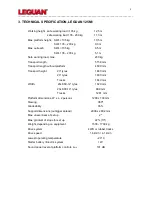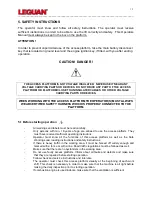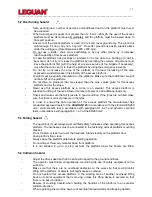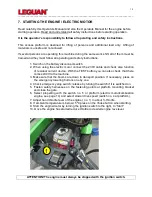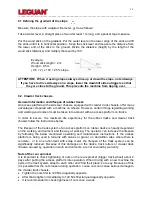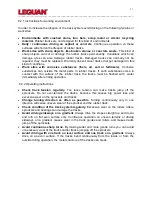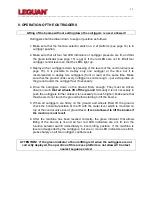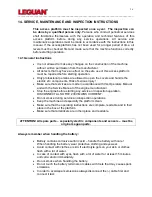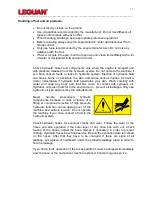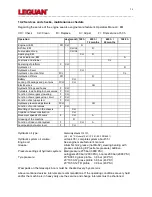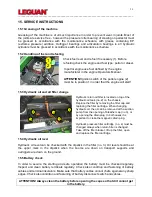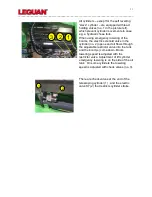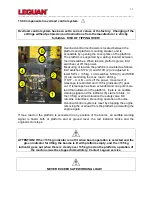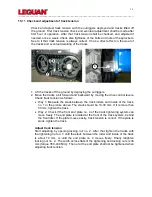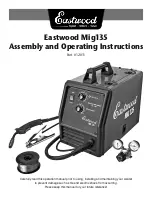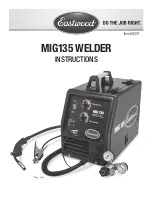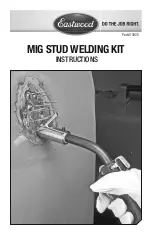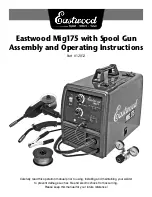
20
_________________________________________________________________________________________
8.1 Defining the gradient of the slope
Measure the slope with a digital clinometer, or do as follows:
Take a water level, a straight piece of wood at least 1 m long, and a pocket tape measure.
Put the wood stick on the gradient. Put the water level on the lower edge of the stick and lift
the stick until it is in horizontal position. Keep the stick level and measure the distance from
the lower end of the stick to the ground. Divide the distance (height) by the length of the
wood stick (distance) and multiply the result by 100.
Example:
Wood stick length = 2 m
Height = 0,5 m
( 0,5 ÷ 2 ) x 100 = 25 % slope
ATTENTION! When crossing slopes always drive up or down the slope, not sideways.
If you have to drive sideways on a slope, lower the downhill side outriggers so that
they are close to the ground. This prevents the machine from tipping over.
8.2. Crawler track chassis
General information and lifespan of rubber tracks
An access platform with skid steer chassis, equipped with crawler track chassis, offer many
advantages compared with a machine on wheels. However, certain things regarding working
and working environment must be taken into account with an access platform on tracks.
In order to secure the maximum life expectancy for the rubber tracks and crawler track
chassis follow the instructions below.
The lifespan of the track system of an access platform on rubber tracks is heavily dependent
on the working environment and the way of working. The operator can increase the lifespan
by following the below mentioned operating and maintenance instructions. If the access
platform is being used in terrains with stones or gravel, on demolition sites where there is
concrete, or in an environment with scrap metal, the lifespan of the track system can be
significantly reduced. Because of this damages on the tracks, track rollers or crawler track
chassis, caused by operation in such environments, are not covered by warranty.
Nuts of the rear sprocket
It is important to check tightening of nuts on the rear sprocket (bigger track wheel) about 2
days after putting the access platform into operation. When driving with a new machine the
parts in the track system adapt to each other and ”find their place” so to say. Because of this
it is possible that the nuts loosen during operation. Loose nuts can cause serious damage to
the crawler track chassis.
Tighten the nuts first to 120 Nm diagonally opposite
After that retighten immediately to 140 Nm final torque diagonally opposite
It is recommended to check tightness of nuts once a week



